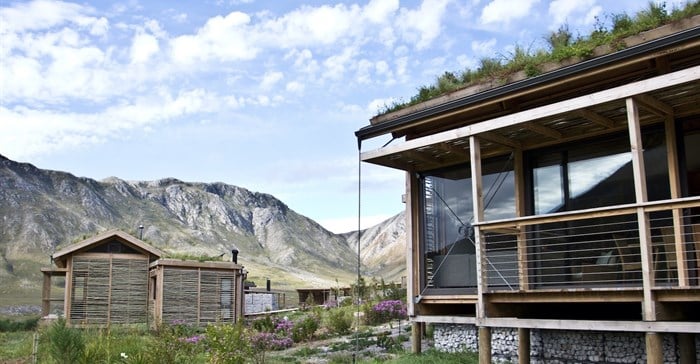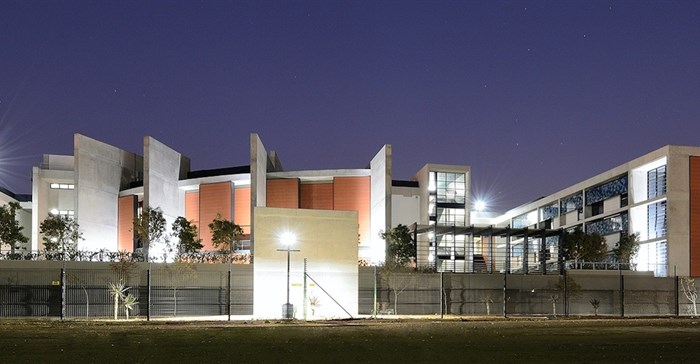





Architecture Coop’s Oudebosch Camp in the Kogelberg Biosphere Reserve (Western Cape), Alive Architecture’s WWF SA building in Braamfontein and Boogertman+Partners Architects’ Department Of Environmental Affairs (DEA) building in Pretoria are among the final qualifying entries for this year’s awards, which will take place a month from now on October 27th in Cape Town.
Tucked away in an UNESCO World Heritage Site in the mountains above Betty’s Bay, Oudebosch Camp nestles unobtrusively within a protected wilderness area in the Kogelberg Biosphere Reserve. The buildings are modestly scaled, lightweight, with planted roofs. The palette of natural, local, renewable, low embodied energy, non-toxic materials and components develops the low impact sustainable qualities of the project. Low-tech simple passive design principles underpin crafting of the building envelope which is shaped for the shifting seasons.

The WWF building in Braamfontein is the first 6-Star GBCSA Design Rating on a brownfields site in South Africa. The primary focus of the design of the building, a restorative project in a heritage building dated back to 1905, was centred on the maximisation of the site parameters, whilst recycling most of the existing materials within the site. The building - which enforces the WWF sustainable ethos - has a serious implementation of green technologies, water harvesting, natural ventilation.

The DEA building achieved a six star green office v1 design rating based on the fact that the structure reflects the culture of the institution, the way it works and functions as well as the institutional purpose, beliefs and service to the country and the community. The design responded to an environmentally sensitive and sustainable architecture and hosts an array of sustainable technologies.

Final qualifying entries in 2015/2016 AfriSam-SAIA Award for Sustainable Architecture + Innovation were selected following an intensive inspection process at each location (in-loco). Twenty-two qualifying projects out of a record-breaking 47 entries were identified by the adjudication panel with the winning and commended projects due to be announced at a gala event.